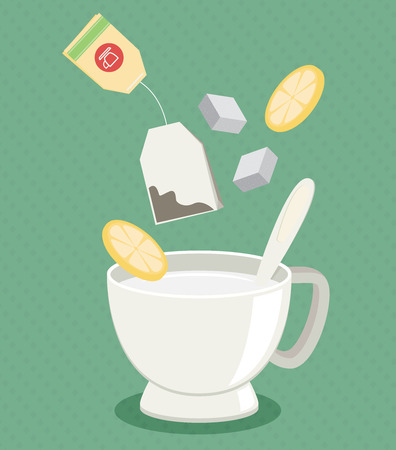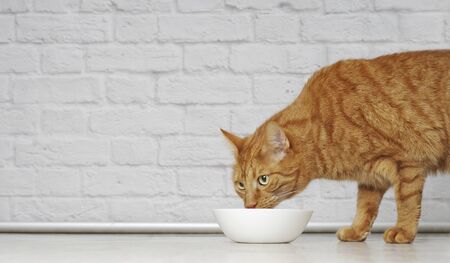Understanding Your Pet’s Unique Dietary Needs
When it comes to creating a balanced meal plan for your exotic pet, the first and most critical step is recognizing that not all animals thrive on the same foods. Unlike cats or dogs, exotic pets—whether they’re reptiles, birds, or small mammals—have specialized nutritional needs shaped by their species, natural habitats, and behaviors. For example, many reptiles require a delicate balance of calcium and phosphorus to support bone health, while parrots might need a variety of seeds, nuts, and fresh produce to mimic their wild diets. Small mammals like ferrets are obligate carnivores and simply can’t stay healthy on the pellet-based diets common for rabbits or guinea pigs. Relying on a one-size-fits-all approach or standard commercial feed risks leaving your pet malnourished or even causing serious health issues. Taking the time to understand your pet’s unique dietary profile sets the stage for a meal plan that supports energy, longevity, and overall well-being.
2. Choosing Fresh, Nutritious Ingredients
When it comes to creating a balanced meal plan for your exotic pet, ingredient selection is everything. Many pet owners get overwhelmed at the grocery or local pet store, but with a little know-how, you can pick out the best produce, specialty proteins, and supplements to support your pet’s unique health needs. First, always opt for organic or pesticide-free fruits and veggies whenever possible—think leafy greens like collard or mustard greens for reptiles, or fresh berries and apples (no seeds!) for small mammals. Avoid produce that’s high in oxalates or goitrogens, which can interfere with nutrient absorption.
Shopping for Specialty Proteins
Unlike traditional pets, exotics may need protein sources outside of standard kibble. For insectivores like bearded dragons or sugar gliders, look for live insects such as crickets or mealworms—most major pet stores carry these in temperature-controlled sections. If your pet requires animal protein, check for frozen rodents or specialty meats at reputable shops. When sourcing proteins, ensure they are gut-loaded (fed nutritious food before feeding them to your pet) and free of additives.
Produce and Protein Selection Guide
| Pet Type | Best Produce Choices | Recommended Proteins |
|---|---|---|
| Reptiles (e.g., Iguanas) | Collard Greens, Squash, Bell Peppers | Occasional Boiled Eggs |
| Small Mammals (e.g., Hedgehogs) | Apples (seedless), Blueberries, Carrots | Cooked Chicken Breast, Mealworms |
| Birds (e.g., Parrots) | Kale, Sweet Potato, Bananas | Cooked Eggs, Sprouted Seeds |
Don’t Forget Supplements!
Even with careful ingredient selection, most exotic pets benefit from added vitamins and minerals. Calcium powder (often with vitamin D3) is essential for reptiles and amphibians; check labels for species-specific formulations. For birds and small mammals, consider multivitamin drops mixed into their water or food. Always consult your exotic vet before introducing new supplements to ensure safety and proper dosing.

3. Balancing Macronutrients for Optimal Health
When it comes to designing a meal plan for your exotic pet, balancing macronutrients is where science meets nature. Each species—whether it’s a sugar glider, iguana, or hedgehog—has unique dietary habits formed by evolution. Instead of relying on guesswork, focus on replicating the ratios of proteins, fats, and carbohydrates they would naturally consume in the wild. This approach not only supports their overall health but can also help prevent common issues like obesity or nutritional deficiencies.
Understanding Protein Needs
Protein is often the cornerstone of an exotic pet’s diet, especially for carnivorous and insectivorous animals. For example, ferrets thrive on high-protein diets, while parrots may need a more moderate amount. Observe your pet’s natural feeding behavior and consult reliable resources to determine the right protein sources—think whole insects, lean meats, or specific plant-based proteins for herbivores.
The Role of Healthy Fats
Fats are crucial for maintaining skin health, energy levels, and supporting cellular functions. However, not all fats are created equal. Exotic pets like reptiles might require more omega-3 fatty acids from insects or fish oils, while small mammals could benefit from seeds and nuts in controlled portions. Pay attention to fat quality as much as quantity.
Smart Carbohydrate Choices
Carbohydrates can be tricky; many exotic pets in the U.S.—from chinchillas to geckos—consume very little in the wild. Offer fibrous vegetables, fruits (in moderation), or specialized pellets tailored to your pet’s digestive system. Avoid simple sugars and processed grains that are foreign to most exotic species’ natural diets.
By observing your pet’s instinctive eating patterns and mirroring them with thoughtfully chosen foods, you’re not just feeding them—you’re nurturing their well-being with biology-based meals that feel familiar and satisfying.
4. Meal Prep Hacks: From Batch Cooking to Safe Storage
If you want to keep your exotic pet happy and healthy, meal prepping like a pro is key—especially if you’re juggling work, family, and a busy American lifestyle. Here’s how you can make feeding your pet both efficient and foolproof, using some classic U.S. kitchen hacks.
Batch Cooking for Busy Weeks
Batch cooking isn’t just for gym buffs or parents with toddlers—it works wonders for exotic pets too! Set aside an hour on Sunday to prep a week’s worth of meals. Chop veggies, portion out proteins, and cook grains in advance. Use color-coded containers (a popular trick in American kitchens) to easily separate food types and avoid cross-contamination. For example:
| Food Type | Prep Tip | Container Color |
|---|---|---|
| Veggies | Pre-chop, blanch if needed | Green |
| Proteins (Eggs, Chicken) | Cook & shred or dice | Red |
| Grains/Pellets | Measure into servings | Blue |
| Treats/Snacks | Portion into small bags | Yellow |
Safe Food Storage 101
Avoiding spoilage is crucial—nobody wants a sick gecko or sugar glider! Stick to airtight containers (BPA-free is best), and label everything with the prep date using painter’s tape and a Sharpie—an American household staple. For perishables, use the “first in, first out” method: always serve the oldest food first. Freeze extra portions in single-meal sizes for quick defrosting.
Quick Checklist for Safe Storage:
- Avoid glass jars if pets can knock them over.
- Keep raw meats separate from veggies.
- Use fridge organizers to maximize shelf space.
- Store insect feeders in ventilated containers away from direct sunlight.
- Never refreeze thawed food.
Cultural Pro Tip:
If you’re already meal prepping for yourself or your kids, double up on safe ingredients that overlap with your pet’s diet—think carrots, leafy greens, and boiled eggs. This not only saves time but helps reduce food waste—a win-win for both your family and your furry (or scaly) friend!
5. Avoiding Common Feeding Pitfalls
When it comes to exotic pets, even the most well-meaning American owners can fall into some classic diet traps. Let’s break down the most frequent feeding mistakes and how you can sidestep them with practical solutions that work in real life.
Overfeeding or Underfeeding
One of the top issues is misjudging portion sizes. Unlike cats and dogs, exotic pets like reptiles, birds, or small mammals have very specific caloric needs. Overfeeding can lead to obesity and health complications, while underfeeding causes malnutrition and stunted growth.
Solution:
Consult a vet familiar with your pet’s species for a recommended feeding schedule and portion size. Use measuring tools rather than “eyeballing” amounts, and track meals using a simple chart or smartphone app.
Inappropriate Food Choices
A common pitfall is assuming that what’s healthy for humans—or even other pets—is suitable for exotics. For instance, iceberg lettuce may seem harmless for reptiles but offers almost no nutritional value. Similarly, seed-only diets for birds can cause serious deficiencies.
Solution:
Research species-specific dietary requirements from reputable sources like zoos, universities, or specialized pet associations. Build meals around whole foods recommended for your pet: think leafy greens for iguanas, pellets plus fresh veggies for rabbits, or a variety of insects for certain lizards.
Lack of Variety
Sticking to one type of food (even if it’s “safe”) leads to nutrient gaps. Many American pet owners feed only what their animal seems to like—which can backfire in the long run.
Solution:
Introduce new foods gradually and rotate ingredients weekly to encourage balanced nutrition. For picky eaters, mix favorites with new items and monitor reactions to avoid stress or digestive upset.
Ignoring Hydration Needs
Some exotic pets require specific water sources (like misting for reptiles or bathing dishes for birds), not just a bowl. Dehydration is often overlooked but can be deadly.
Solution:
Learn your pet’s unique hydration habits and provide clean water in the preferred format. Consider humidity levels for amphibians and regular checks on water bottles or bowls to prevent blockages.
Bottom Line
The key to avoiding feeding pitfalls is staying informed and attentive. By adjusting your approach with these actionable tips, you’ll create a meal plan that supports your exotic companion’s long-term well-being—American style: practical, thorough, and caring.
6. Making Mealtime Enriching and Fun
Bringing excitement to your exotic pet’s mealtime isn’t just about making feeding more enjoyable—it’s also a great way to encourage natural behaviors and keep your companion mentally sharp. A little creativity goes a long way in turning ordinary meals into stimulating experiences that mimic the challenges they’d face in the wild.
DIY Feeders: Challenge Their Instincts
One of the best ways to add variety is by crafting your own feeders. Try hiding food inside cardboard tubes, egg cartons, or small boxes with holes cut out. For birds, you can string pieces of fruit or veggies on untreated twine and hang them in different areas of their enclosure. Reptiles may enjoy hunting for insects hidden under leaves or inside crumpled paper. Rotating these DIY puzzles keeps things fresh and motivates your pet to use their senses and problem-solving skills.
Homemade Treats for Positive Reinforcement
Homemade treats are another fun way to spice up your pet’s diet. Make frozen fruit popsicles for sugar gliders or lizards, or blend up a mash of safe fruits and veggies for rodents and birds. Always double-check which foods are safe for your species before introducing something new. Use treats as rewards during training sessions, reinforcing good behaviors while keeping things interactive.
Keep It Safe and Supervised
While adding enrichment, always supervise your pet with new toys or feeders to make sure there are no choking hazards or unsafe materials. Remove any uneaten perishable food after a couple of hours to prevent spoilage, especially in warm environments.
The Power of Routine with a Twist
Even pets love a little predictability—having set mealtimes helps them feel secure. But within that routine, mix up the presentation of their meals: try serving food in different locations, using various textures, or even offering foods at slightly different temperatures (when safe). This stimulates curiosity without causing stress.
By combining balanced nutrition with engaging mealtime activities, you’re not just feeding your exotic pet—you’re nurturing their mind and instincts. The result? A healthier, happier companion who looks forward to every meal as an opportunity for play and exploration.

